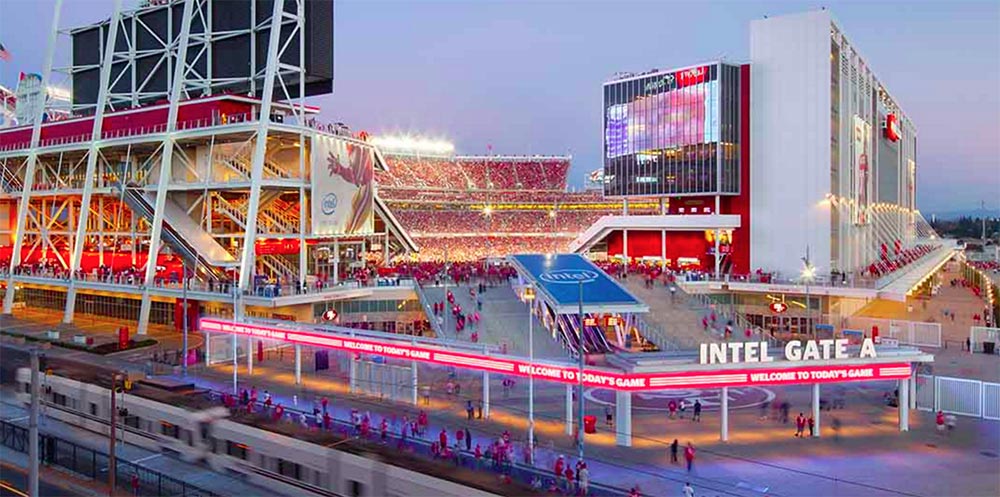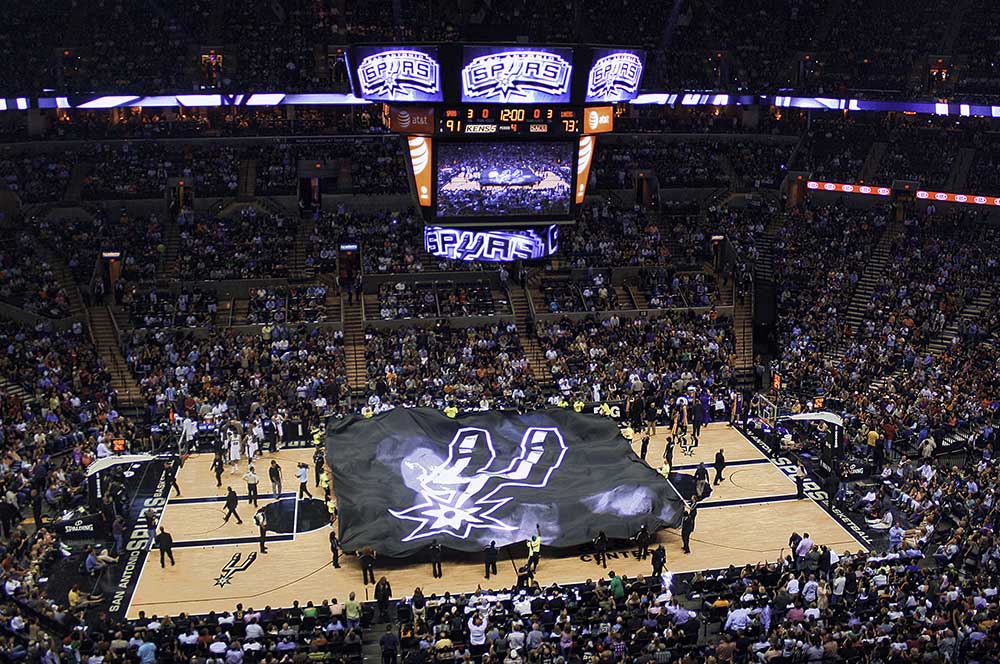Improving the fan experience by giving them access to new technologies to combat their threat is the key to smart stadiums, the venues of the future
Sporting events had a maxim that worked very well to fill stadiums before the definitive explosion of the digital age: there is nothing better than enjoying live sport, nothing more authentic than experiencing the excitement at the playing field. The new technologies and the resources of the big channels to monetize their millionaire investments in television rights have questioned this affirmation.
A study by telecom company Cisco revealed a worrying trend over the last decade: 57% of sports fans now prefer to watch matches at home. And forecasts by sports demographer Rich Luker point in the same direction: his research suggests that the largest decline in sports fans is in the 12 to 34 age bracket.

Barclay’s Center, New York
If you cannot beat your enemy, team up with him. The sports industry, a great source of entertainment, has stopped seeing technology as a threat in order to ally itself with it and fight for getting people off the couch. In other words, it is necessary to keep the public permanently connected, improve their experience when they enter a sports venue and avoid them feeling those discomforts that appear when leaving the house: queues to access the grounds, problems to park, to access services, to get a drink or to instantly see the replays that the television shows him from multiple angles. If you have all that, the old maxim that there is nothing better than the live competition experience regains all its strength.
To find the stadiums with the best technology in the world you have to look, of course, towards the United States. Levi’s Stadium, where the NFL’s San Francisco 49ers play; the Barclay’s Center, home of the Brooklyn Nets (NBA) and New York Islanders (NFL) and the AT&T Center, the San Antonio Spurs’ (NBA) arena, are a good example of what the best stadiums in the world need to have in order to fulfill that promise to offer fans an unforgettable experience and leave them wanting to repeat it.

Levi’s Stadium
In order to guarantee the interaction of the fans, connectivity is essential, not only among the public, but in all points of the complex, whether in sales areas, security areas, press areas or, obviously, in the luxurious ‘suites’ where business is done. The millennials do not hesitate for a second to leave the stadium at half-time if they do not have a good internet connection and all the services offered by the venue depend on a good network for the business to run well. The three stadiums mentioned above have around 700 Wi-Fi hotspots that guarantee a fast, safe and good quality connection.
Custom applications are also essential for connecting with the stadium. An app that shows you the fastest route to the venue, the time you need to get there, the parking spaces available, your ticket downloaded on your smartphone, the way to your seat and the possibility of getting an instant upgrade, by paying a little more if once there you want to enjoy the show from a better position. Locating the nearest toilet in a pavilion with a capacity of 20,000 spectators will help you save time in the queue and miss fewer minutes of play, and being able to order some potato chips and a drink with a single click on your phone is also appreciated.

While you enjoy the action on the field, on your phone you have access to the best replays, the statistics of the game in real time and even spontaneous photographs in which you are the protagonist. Hundreds of cameras scattered around the stadium capture images of fans and show them on giant screens as part of the show. These cameras can capture up to a million images during a game. To download yours, you only need to enter the date of the game and the number of your seat in the app. Your photo will be ready to share on your social networks. The arena of the NBA’s Los Angeles Clippers, for example, has this technology and has confirmed that between 15 and 25% of its visitors have this app on their smartphone and download their photos on match days.

AT&T Center, San Antonio Spurs’ arena
The benefits for the spectator are obvious and the investment in their sports facilities, although considerable, also brings advantages to the franchises. Technology delivers a huge amount of data about sport consumers: who they are, what they are like, how they get around, what their habits are and how they have come to us. And all in real time. For the fan, it is about getting the most out of all the possibilities offered by the venue and, for the owner, that the interaction is as prolonged as possible. The technology will do the rest.
RELATED STUDY PROGRAMS
Johan Cruyff Institute Amsterdam uses a rich learning environment that fosters educational tools based on a student interaction model. We aim for a mix of students from sports and business sectors, which also enables students to share their unique experiences and learn from each other. Through ‘Cruyffian’ teaching methods the students will engage actively in creative challenges that require effort, commitment and intuitive thinking. Visit these web pages to find out more about these upcoming programs in English:
- Master in Sport Management (Start: September 2017, Amsterdam)
- Master in Coaching (Start: May 2017, Amsterdam)
- FC Barcelona Master in Football Business by Johan Cruyff Institute (Start: April 2017, Barcelona)
- Postgraduate Diploma in Sport Marketing Online (Start: February 2017)
- Master in Sport Marketing and Sponsorship Online (Start: February 2017)


